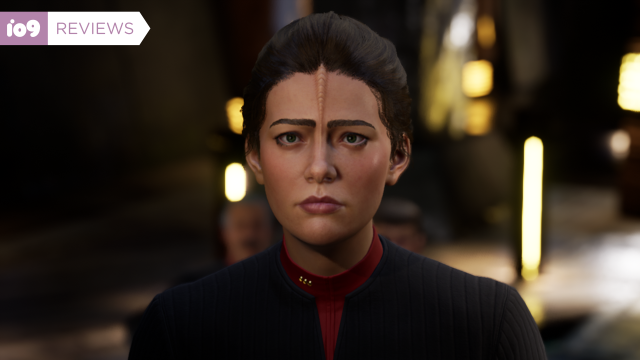Star Trek has an up and down history with video games moreso than most storied franchises. It’s rare for a singular game to properly capture Star Trek as an experience when, at its best, Star Trek debate, diplomacy, and scientific investigation don’t quite line up with gaming hallmarks. But the adventure game genre is one where Trek has succeeded in the past — and for the most part, Star Trek: Resurgence adds to that history… with some significant caveats.
Out this week, Star Trek: Resurgence is a narrative-driven, choice-based adventure game in the vein of Telltale Games’ episodic gaming series, such as The Walking Dead, Batman, Guardians of the Galaxy, and more (developer Dramatic Labs was founded by several former Telltale staffers after the studio first effectively shuttered in 2018; the revived studio is currently working on a game based on The Expanse).
Whereas traditional adventure games lean heavily on puzzles, these games are driven by player choice through multi-pronged dialogue scenes, allowing the player to shape the path of the narrative — a perfect fit for a series like Star Trek. Unlike the oeuvre of past Telltale games, however, what sets Resurgence apart is that it is a singular, 12-ish hour story, rather than being broken down into episodic seasons of game slices. The feeling it creates is less like watching an interactive episode of Star Trek, and more like a choose-your-own-adventure novel coming to life.
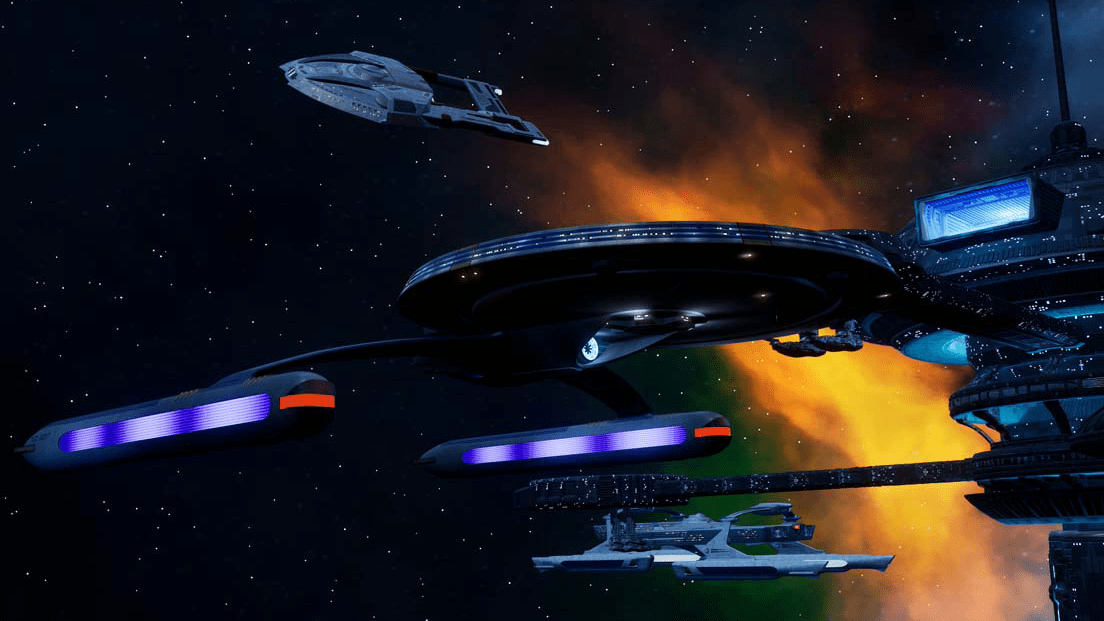
Resurgence is set in 2380 — a year after the events of Star Trek: Nemesis — and follows the crew of the U.S.S. Resolute, a science vessel rocked by a recent accident that resulted in the loss of 20 of its crew, including its first officer. When new XO Commander Jara Rydek is brought aboard, the Resolute is tasked with participating in diplomatic negotiations between two alien species, the Alydians and the Hotari, over a mining world — only to discover the source of the conflict has dire, far-reaching implications for the entire galaxy.
Where Resurgence stands out from prior adventure games of its ilk, and where it plays to Star Trek’s strengths the most, is in dividing the player’s perspective between two primary characters: the aforementioned Commander Rydek, a Kobliad officer thrust into the politics of not just a new command but a senior staff splintered over the loss of one of their own, and Petty Officer Carter Diaz, an engineering crewperson trying to navigate life in the lowest of the lower decks on a Federation starship with his best friend, a Trill named Nili Edsilar. By making the audience viewpoint cover such a broad scope of Star Trek’s command structure, Resurgence deftly manages to explore life aboard a starship from multiple narrative and mechanical angles.

If Jara’s sections of the story are driven around establishing herself as a senior officer and the politics of diplomacy, from command of the bridge to staff meetings, Carter’s leans a little more on the practical side of the adventure game genre, problem-solving and puzzling to get his job done in environments where his rank means he’s not often the go-to for big, splashy Star Trek action. Even when things go sideways and the whole Resolute crew is thrust into an epically staked mission to save the galaxy, this divide in perspective remains throughout, capturing the broad Star Trek experience.
This is just one of the many ways Resurgence revels in capturing the vibe of Star Trek — and more specifically the vibes of his heyday in the late ‘80s and the ‘90s, the peaks of The Next Generation, Deep Space Nine, and Voyager defining a modern era of the franchise beyond the original series’ retro aesthetic. Resurgence shows its love of Star Trek not in cameos and references (although their are a few notable characters who make appearances, including Ambassador Spock and Titan captain Will Riker), but in aping classic story elements and structures from those shows, weaving a largely original take through nods and connections to prior stories. Like Star Trek itself, the action is largely sparing, with the most tension and conflict coming from how your characters navigate tough command decisions or debate — and even when things do come to blows and conflict becomes violent, Resurgence more often than not eschews direct combat to instead focus on the decisions its characters are forced to make in those moments, rather than how good they are at firing a phaser.
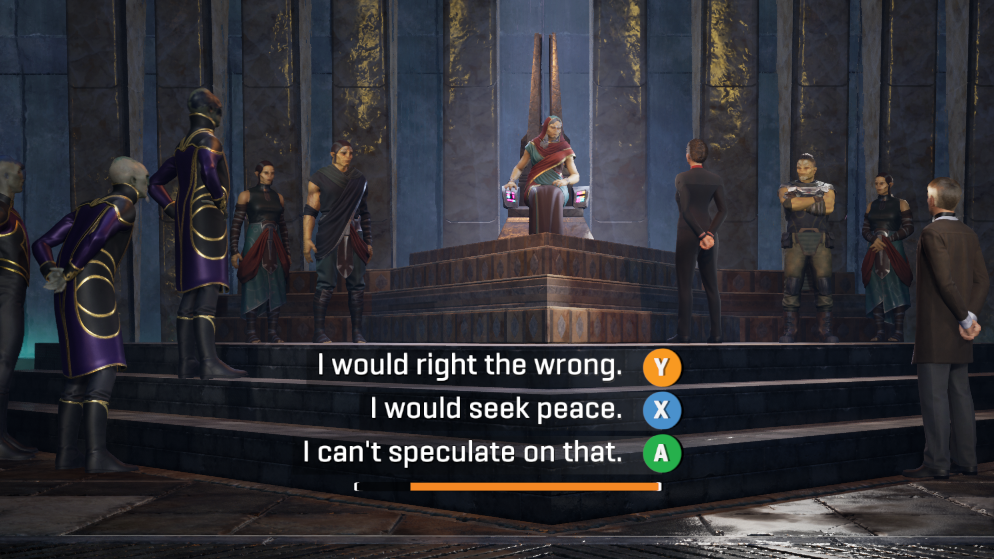
This is amplified even further by the fact that Resurgence focuses on a completely original crew of characters. The decisions you make, from the mundane to the life-threatening, all feel like they carry a weight of uncertainty, as no character is necessarily guaranteed to make it out of the story in one piece. You’re watching your relationship to these characters grow in real-time as you decide who to put faith in and who to keep at arms’ length, or in how you shape Rydek and Diaz themselves grappling with the morals of Starfleet coming up against the desperation of their increasingly hazardous mission. Resurgence is still largely a story of Starfleet heroes saving the day, but there is a level of tension running throughout that most Star Trek stories can’t quite capture when you know the crew you’re following is going to be largely fine by the end of the tale.
All of this narrative interest, however, often comes into conflict with the other truth of Resurgence: it’s simply not a very fun game to play. The moments you are given control of Jara and Carter are defined by awkward controls, clunky animation, and an erratic graphical consistency where character models look great but the environments they’re in decidedly do not (it’s worth stating that Resurgence will run you $US40 ($56), under the typical price of a major AAA game but still enough that it feels very rough around the edges for that cost).
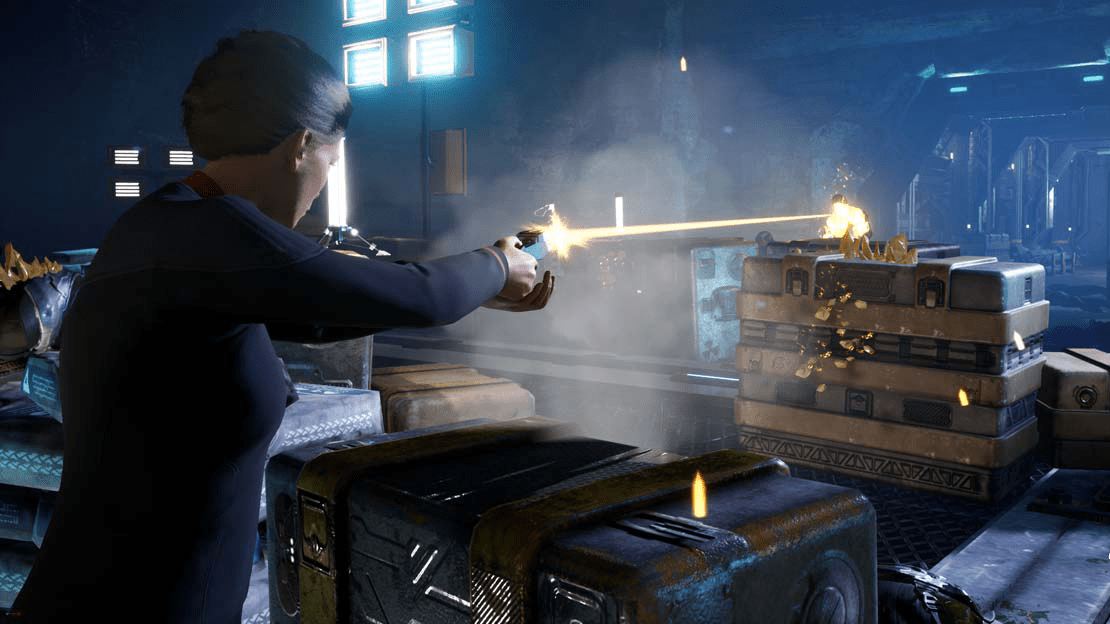
Although moments of direct action are rare in Resurgence’s focus on dialogue choices, that’s not to say they’re absent entirely. But you find yourself thankful that phaser shootouts are few and far between because they’re the most frustrating sequences of the game to play; weightless action and swimmy controls are matched by frustrating fail states that often feel like they’re asking far too much of what Resurgence can mechanically handle. This is further impacted by the simple fact that, for an adventure game, there’s very little actual adventuring to do. Resurgence’s decision to lean heavily on cinematic dialogue choices for its interactions means there’s little in the way of interesting puzzles or tools to interact with the world around you. There’s one way to do most things, and it’s not about figuring that out as much as it is shepherding you from one dialogue sequence to the next.
That linearity also adds to Resurgence’s core weakness: it’s linear to the point of frustration. Awkward moments where you’re asked to take control of your character to clunkily navigate a corridor — only for a cutscene to immediately take over — make you feel relieved that for the next few minutes, the game might only ask you to make a few dialogue choices instead of more directly play it. The single-minded thrust of the game also means there’s little downtime between major story beats for you to casually explore your surroundings, or get to know your crewmates better. Every interaction is in the name of driving the main story arc forward, with limited opportunities for reflection and exploration. By the end of Resurgence’s 12-hour trek, that makes you feel like a lot of those big story choices you’re being asked to influence are mostly impactful on the immediate following scenes rather than the larger story, taking the bite out of the weight and tension the narrative leans on as one of its greater strengths.
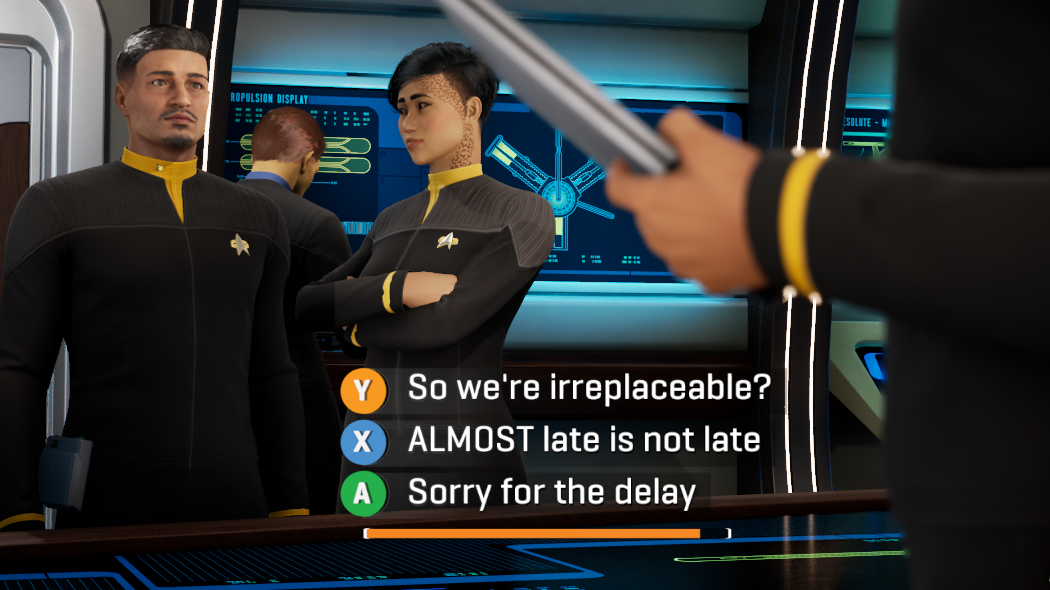
Not quite as major but still frustrating is that at least on PC with Resurgence’s press-build, the game is equally clunky in its bugginess. While it’s nothing severe enough to cause a loss of progress, Resurgence on PC was a pain to navigate with menus not functioning right, certain menus not recognising a gamepad (which even on PC, is the recommended control option), and, bizarrely enough, the game locking up every time I tried to close it after a session. Although gameplay is largely spared from these issues, there are still some persistent bugs while playing, in the form of dialogue subtitles either not correctly displaying or, sometimes, showing incomplete or totally different lines to what was being said — a pain point from both an accessibility standpoint and a narrative standpoint, where several modified subtitles provided the player with contextual information that wasn’t actually said in the scene, making it hard to tell what mattered.
Ultimately, how willing you are to grapple with the awkward gameplay of Star Trek: Resurgence will depend on how much you really want a new, original Star Trek story, in a time when there’s more Star Trek available in various formats than arguably since its giddy heights in the ‘90s. Resurgence will very much give you a solid Trek tale populated with compelling characters and interesting leads that perhaps comes closest to making you feel like you’re taking part in a classic Star Trek narrative — certainly more than many other games have attempted in decades. But that success is often in spite of itself, a not-quite diamond in the very-much rough of its clumsy, awkward mechanics.

Star Trek: Resurgence launches tomorrow, May 23, on PC (exclusively through the Epic Games Store), PlayStations 4 and 5, and the Xbox Series X, S, and Xbox One.
Want more Gizmodo news? Check out when to expect the latest Marvel, Star Wars, and Star Trek releases, what’s next for the DC Universe on film and TV, and everything you need to know about the future of Doctor Who.
Editor’s Note: Release dates within this article are based in the U.S., but will be updated with local Australian dates as soon as we know more.
